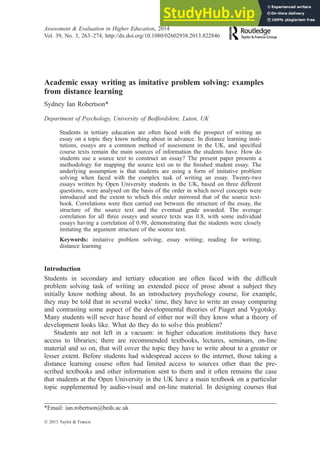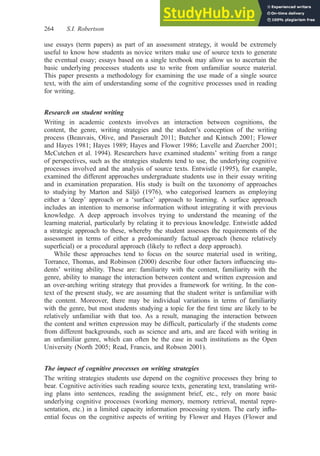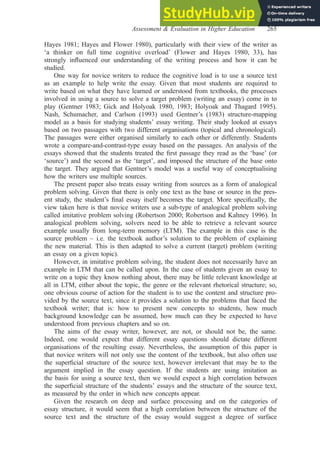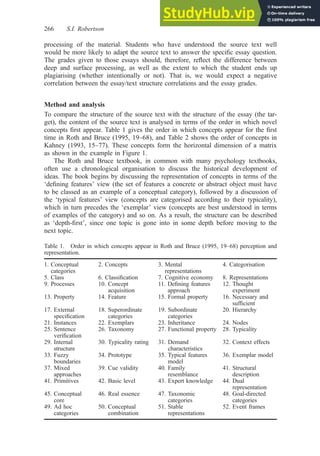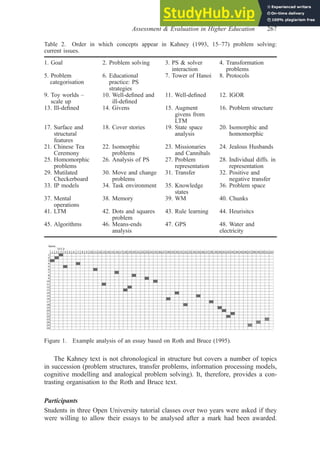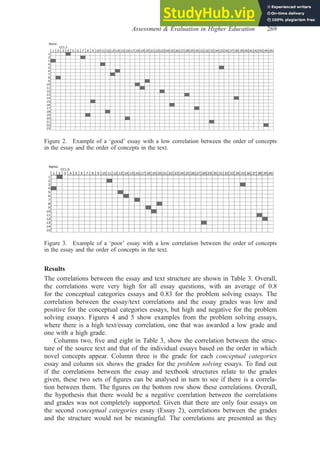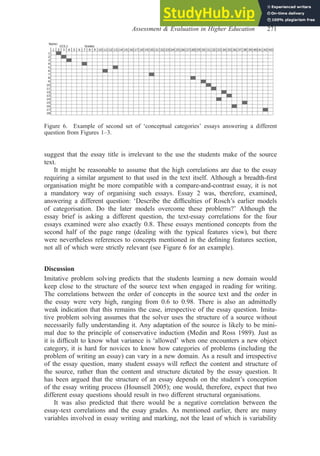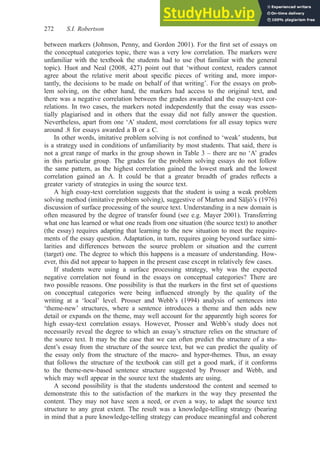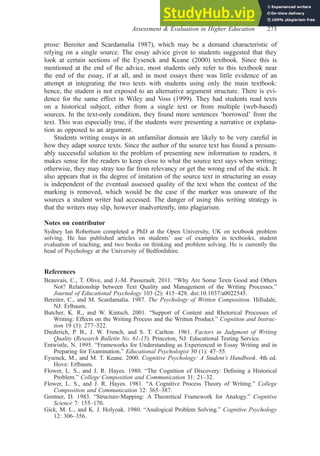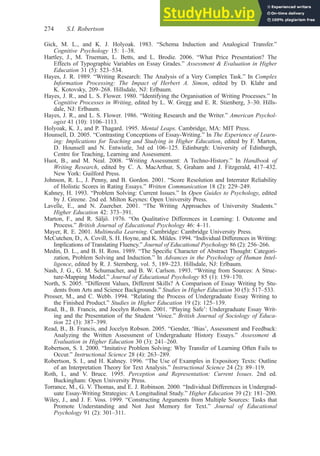The document summarizes a study that analyzed 22 academic essays written by Open University students in the UK. The study aimed to understand how students use source texts to write essays. It mapped the order that novel concepts were introduced in the student essays against the order in the source textbooks. It found high correlations between 0.8 and 0.98, demonstrating students closely imitated the argument structure of the source texts. This suggests students used a form of "imitative problem solving" when writing essays, relying heavily on the structure and content of the source materials provided.
